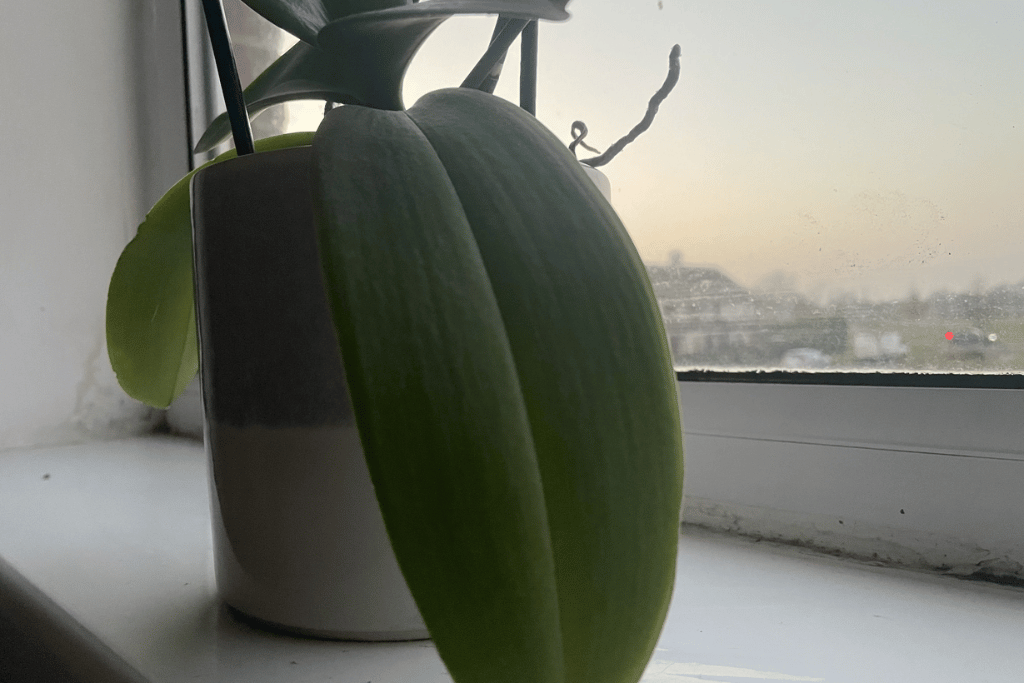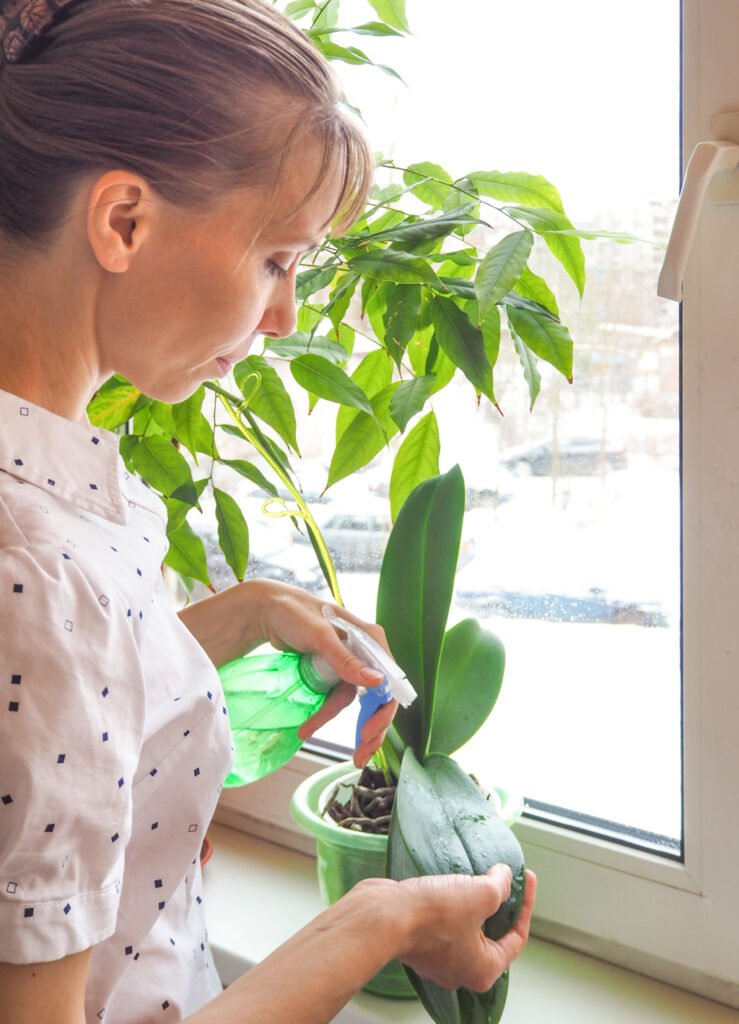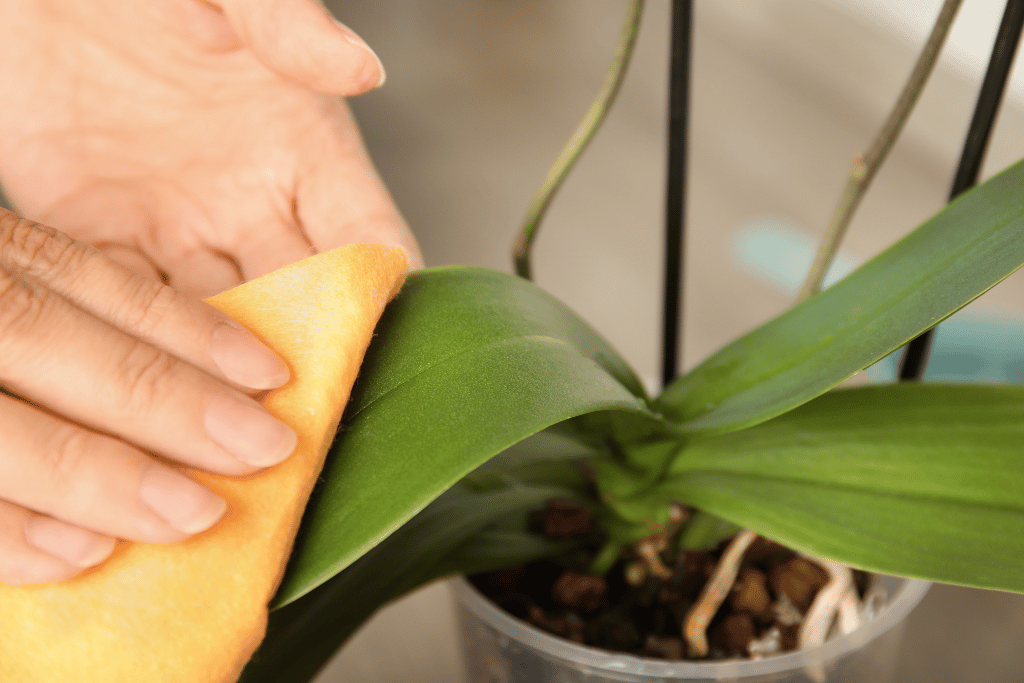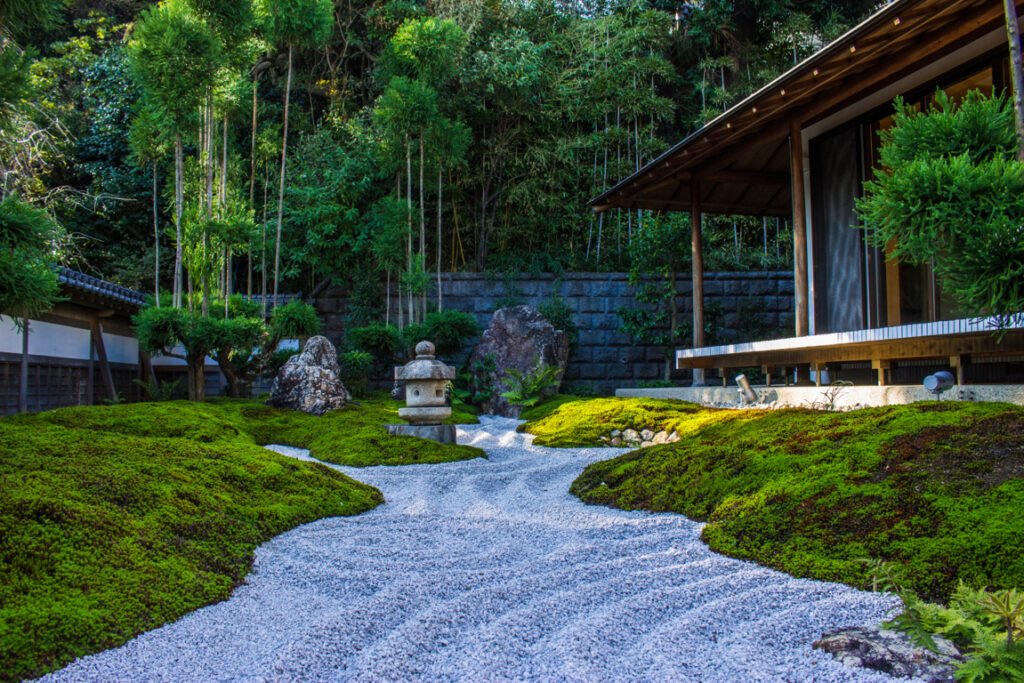Orchid leaves are typically green and vibrant, putting out a lush aura that everybody loves. Those beautiful blooms draw you in, and the lovely new growth of leaves is such a reassuring sight. But – how do we make sure those leaves stay that color? It’s quite simple, and you’ve likely got the stuff to do it with at home! In this article, I’ll explain how to clean orchid leaves with a variety of different methods.

Why Do I Need to Clean My Orchid Leaves?
To put it short, plants produce their food through a process called photosynthesis. The plant takes in water and carbon dioxide, using light to drive the process and a pigment called chlorophyll in the leaves. This produces glucose which the plants can use to grow, and this also releases oxygen into the environment.
When we let dust and other minerals build up on the leaves of our orchids, this will reduce the effectiveness of photosynthesis, and you may notice that the leaves aren’t as healthy as they once were. This can be easily solved as long as we clean the orchid leaves frequently.
Gas exchange through the pores (stomata) of the orchid may also be affected if the leaves are dirty, so it’s always best to keep them spick and span!
If you’re noticing white spots on the leaves of your orchids, this is typically a sign of mineral buildup on the leaves.
How to Clean Orchid Leaves
1. Water
Although water won’t necessarily remove the mineral buildup on your leaves, it’s a suitable solvent for getting rid of any plain old dust on your orchid leaves. Simply wet a paper towel and wipe it across the leaf, cleaning it thoroughly.
If you keep using this method, do note that you might get mineral buildup on the leaf over time due to the chemicals in the water, so make sure that you use a mixture of the methods listed below to get rid of this mineral buildup.

For getting rid of dust, it’s best to use either water or a duster, as other methods may cause damage to the orchid, which would be useless if there is no mineral buildup in the first place!
2. Washing Up Detergent
Who knew cleaning orchid leaves is just like washing up the dishes? Although, I don’t think that cleaning orchid leaves is anywhere near as tedious or time-consuming!
With this method, you’ll want to dilute the dish detergent heavily, using a 9:1 ratio of water to detergent. You can then dampen a paper towel with the solution and thoroughly clean the orchid leaves. You should notice some bubbles forming from the detergent, and you can wipe these off to prevent any damage from happening. This method can also be used on the underside of the leaves.
Make sure that any excess solution is wiped off the leaf, as this will prevent any new gray marks from forming on the leaves.
3. Lemons
When life gives you lemons, use them to clean your orchids. This is a straightforward and cheap way to clean your orchid leaves, and it’s almost guaranteed to eliminate any mineral deposits on your orchid leaves.
To do this, simply buy a lemon and squeeze it into some water, and then you have your solution to clean the leaves with! I wouldn’t recommend using store-bought lemon juice for this, as it can contain extra chemicals that may mess with the orchid’s health.
Simply dip a paper towel or cloth into the solution, and give your leaves a thorough but gentle wipe. This will get rid of any mineral deposits on the leaf, leaving you with a shiny and lovely leaf. You can also use this on the underside of the leaf, as it won’t interfere with the stomata of the orchid.
With this method, ensure you don’t leave the orchids in the sun after applying the lemon juice. Otherwise, this can intensify the sunlight and burn the leaves. This applies to your skin, too – make sure to wash your hands after doing this, as if you expose them to the sunlight, it could cause nasty burns.
When wiping the leaves, be careful not to spill large amounts of juice onto the soil, as this can interfere with the orchid’s health and cause it to lose its flowers or leaves,

4. Mayonnaise
Mayonnaise is one of the more likely items you’ll have in your home. Although, for this method, it’ll work better if you can make your own mayonnaise – which is a lot easier than most people think. It simply needs vinegar or lemon juice, oil, egg yolk and salt.
The lemon juice in the homemade mayonnaise will help to break down the minerals deposited on top of the leaf due to its acidic properties. You’re probably thinking salt shouldn’t be used, and that’s right. Although we all love a good sauce like mayonnaise for dipping food, if we’re making it for orchids, we should make sure that we don’t include salt, as this can lead to further mineral buildup.
This method shouldn’t be used on the bottom of the orchid leaves, as this could harm the stomata as opposed to other ways, such as using lemons.
5. Alcohol
Although isopropyl alcohol isn’t too practical when cleaning orchid leaves, it’s good if you need to get rid of any pests. On my other plants, I like to use neem oil, an excellent pesticide, but sometimes I use isopropyl alcohol on my orchids instead.
When I first buy an orchid, I like to give it a thorough wipe-down with isopropyl alcohol. This ensures that no pests are allowed to survive on the leaves, stopping them from reproducing. Most nurseries keep many of their plants in close proximity so that pests can spread quite quickly – this is why I always do this. Better to be safe than sorry!
Bacteria is also a prevalent problem in newly bought orchids; luckily, alcohol will kill and stop the reproduction of bacteria very effectively. Alcohol is a main ingredient in hand sanitizer, so we’re essentially sanitizing our orchids too.
Another positive of cleaning your leaves is that it’ll make these pests easier to see. On a dusty background, the pests will blend in and deceive you – but on a shiny, lush, green leaf, they’ll be a lot easier to spot!
6. Diluted Vinegar
You might think that vinegar is not suitable for orchids, but surprisingly it is! You have to make sure that you choose the right product from the right brand. Otherwise, the acidity may be too high for your orchids. Vinegar seems to have the same effect that lemon does on orchids, making it an ideal solvent for cleaning orchid leaves.
Epiphytic orchids prefer pH’s of around 5.5 – 6.5, while terrestrial orchids prefer around 7.5. It’s important not to break these values; otherwise, the orchid will suffer greatly and might die. Make sure to dilute the vinegar heavily, only using it on one leaf at a time to test the reaction.
I recommend waiting at least two weeks before each application, as orchids can be finicky and won’t show you any warning signs until it’s too late. If it’s still fine after two weeks, you can give another application to another leaf! Vinegar will break down the mineral deposits on the leaf.
7. Baby Shampoo
Baby shampoo contains chemicals that are quite good at breaking down mineral deposits and act like dish detergents. This method doesn’t require as heavy dilution, but it should still definitely be diluted when using it.
I’ve found that baby shampoo is very good at breaking down mineral deposits and works effectively and quickly while not harming the orchid. Out of all the methods, I like to use either this or lemon juice.
8. Positioning
Although this method isn’t exactly cleaning your orchid’s leaves, it’s a way of ensuring that you don’t have to clean your orchid as often! I always like to dust the room my orchids are kept in, making sure it’s dust-free around the orchids. This will help prevent a buildup of dust and other substances on the orchid leaves, meaning I don’t have to clean them as often!
You could consider moving your orchids to a separate room, not as large, where it’ll take longer for the dust to build up. I’ve done this, and they’re now on a north-facing windowsill, where they seem to be doing beautifully.
If you are going to do this, ensure that you assess the light in the room. Orchids need above 6 hours of sunlight per day, so you can’t move them to a room which doesn’t get this amount of light or none at all. Otherwise, you’ll find that the orchid will die quite quickly. The stems will begin to yellow, and the leaves will, eventually killing off the orchid. It’s advised to place your orchids on west, east or north-facing window sills unless you have a species such as Dendrobium, which can handle more intense light on south-facing window sills.
Final Thoughts
Cleaning your orchid’s leaves is a very easy task, and I’d recommend doing it at least once every month or more often, depending on the environment you’re keeping it in. It’s hassle-free, and most of these methods you’ll be able to do quite easily if you have the ingredients at home. I like to use the lemon juice method for cleaning the leaves and using the alcohol method for pests and bacteria, but the other methods might suit you more and be better for your orchid.
Frequently Asked Questions (FAQ)
How do I make my orchid leaves shiny?
If you’d like to get a bit of shine on your orchid leaves, I’d recommend using the lemon juice method. Not only does it clean and remove any mineral deposits from the leaf’s surface, but it also adds a lovely shine to the leaf. This helps you to spot any nasty pests hiding on the leaves, which is another excellent positive of using the method.
Can I spray water on orchid leaves?
Yes, you can. It’s recommended that you mist your orchids frequently with water. But – make sure that you mist them during the day; otherwise, the water most likely won’t evaporate from the surface of the leaf when it starts to get dark. Orchids aren’t good at getting rid of water on their leaves, so the water can lead to rotting and further problems, so it’s always best to wipe the leaves down if you get significant amounts of water on them.
Can I use olive oil to clean my orchids?
Many growers like to use a mix of olive oil and lemon juice to clean their orchids, yet I’ve always stuck to using only lemon juice. Reportedly, olive oil is supposed to work just as well, giving it the extra shine as well. Maybe I’ll have to try this for myself sometime; in the meantime, why don’t you? After all, these natural solutions seem to be much better than chemicals that could harm the orchid.
Do orchids like to be wet or dry?
In terms of humidity, orchids love to be wet. However, in terms of actual moisture, they don’t. This might seem complicated, but it’s relatively easy to understand. Don’t overwater your orchids, as their roots can’t handle sitting in water for long periods of time, and don’t water the leaves, as this can rot them and the crown. With humidity though, orchids love high humidity, and this can be achieved by placing them in humidity trays. I like to put grit in it, watering it, which then evaporates due to the light and creates a humid around the orchid. You can also mist the orchid frequently or use a humidifier.



